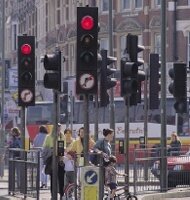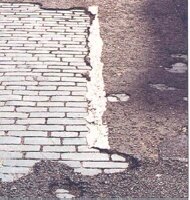Streets for All Summary


English Heritage’s streetscape manuals, Streets for All (2005), set out principles of good practice for street management – such as reducing clutter, co-ordinating design and reinforcing local character. The manuals, covering each of the English regions, provide inspiration and advice on street design which reflects the region’s historic character.
This four page summary, Streets For All, presents two case studies and the principles of good practice for street management which are set out in the regional streetscape manuals.
Principles of Good Practice
Ground surfaces - Paving forms the foreground of almost every streetscene. Quality in the design and construction of footways and streets surfaces is vital to the character of an area. It provides the context within which the buildings are seen.
Street furniture - The finest townscapes often have the minimum amount of street furniture. That which is essential is sited carefully to reinforce an underlying sense of visual order.
Traffic management - Traffic calming measures should be fitted sensitively into the street-scene as though they were part of the original design of the area.
Environmental improvements - Environmental improvements should enhance local distinctiveness and reinforce those qualities which make an area special. The most modest schemes are usually the most successful in reinforcing a sense of place and making streets for people. To achieve quality:
Street management - No single authority or agency has control over or responsibility for the presentation and management of the street. The impact of roads and traffic on the historic environment can only be minimised if highways and planning authorities are co-ordinated. A managerial approach involving engineers and urban designers is necessary.
What's New?
-
The National Heritage List for England is now live on the English Heritage website.
-
Welcome to the HER21 page. This page offers access to the full suite of HER21 project reports.
